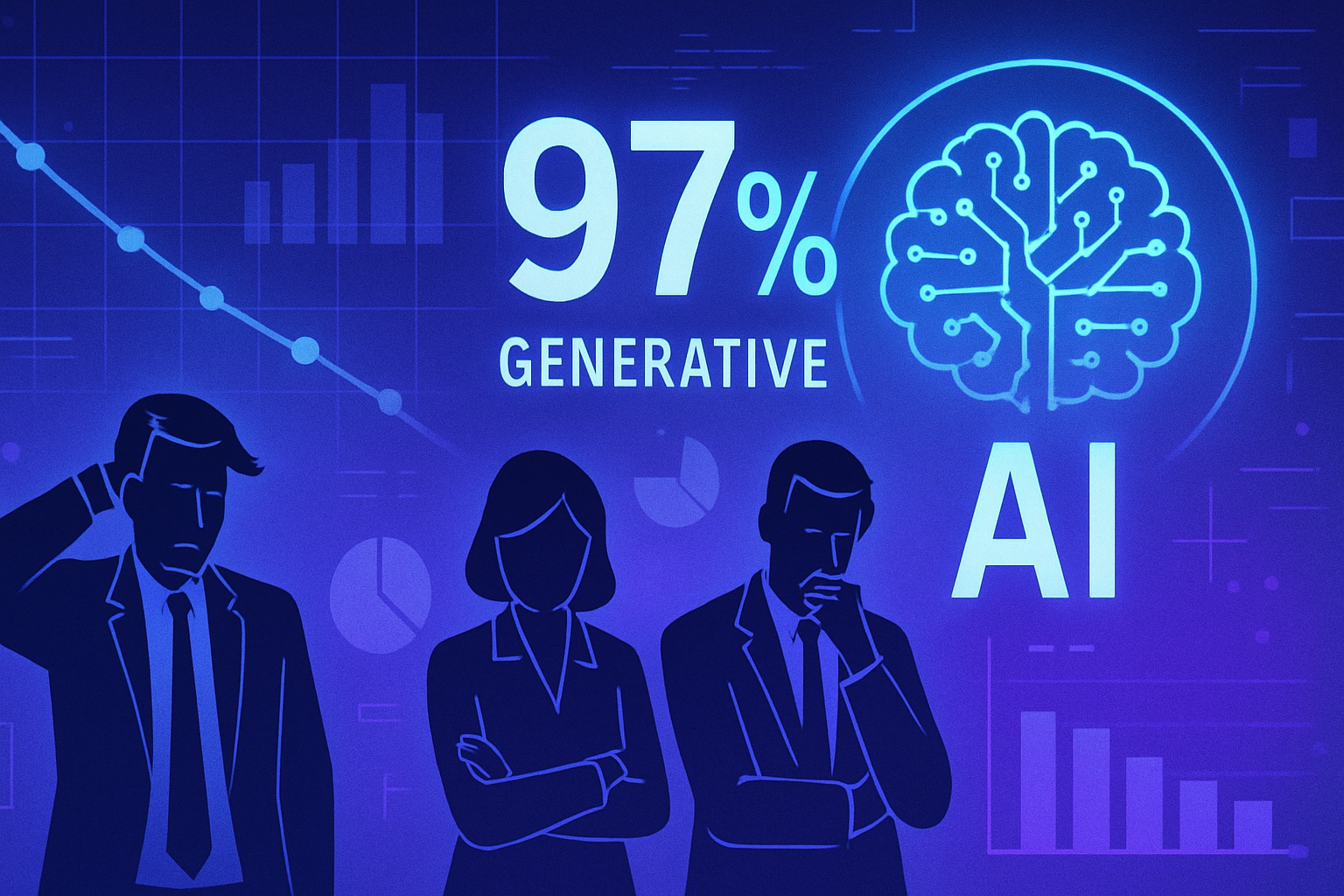The dizzying rise of artificial intelligence is radically transforming the global entrepreneurial landscape. Companies, in a frenzied rush, are committing to deploying autonomous systems, often without precision or preparation. The risks of AI debt threaten their efficiency, leading to unforeseen costs. Inappropriate training and a lack of strategic vision exacerbate organizational chaos. Adaptability emerges as the essential element for the sustainability of operations, providing a lever to navigate this unprecedented era.
Acceleration Towards AI
Companies are racing at full speed into the implementation of artificial intelligence (AI). The business arena is experiencing a rapid evolution, marked by the adoption of AI tools. This movement comes with significant challenges as good execution is essential to avoid financial pitfalls associated with poor integration of autonomous systems.
Costs Associated with Poor Implementation
A recent report from Asana revealed that 79% of companies worldwide fear incurring AI debt due to careless implementations. This situation arises from a lack of infrastructure and oversight, critical elements to ensure smooth collaboration between human employees and autonomous AI agents.
The consequences of these errors can be numerous, ranging from security risks to data quality issues. These problems also lead to a loss of time and resources, directly impacting employee productivity.
Signs of AI Debt
AI debt can manifest in various forms, including dysfunctional code generated by AI systems or unused content. Users have reported receiving about 40% of AI-generated content that seems appealing but lacks substance, contributing to nearly two hours of extra work per month.
This phenomenon proves to be a real burden, recorded as an invisible tax, equivalent to $186 per month and a total cost of $9 million in productivity over a year.
A Thoughtful Strategy for AI
Experts like Henry Ajder, founder of the consulting firm Latent Space Advisory, state that thoughtful implementation is paramount. Technical directors must be aware of the disruptions caused by this transition. Rushed adoption can lead to major complications on the path to AI integration.
Companies must take a cautious approach, involving thorough testing and the development of adequate infrastructure. This process includes appropriate training for employees and clear definitions of targeted AI models.
The Challenge of Digital Fatigue
The Asana report reveals a significant increase in digital fatigue among employees. By 2025, this phenomenon will affect 84% of workers, up from 75% the previous year. Excessive workloads, reaching 77% satisfaction, continue to rise.
Mona Mourshed, CEO of Generation, emphasizes that despite the adoption of AI tools, the lack of clarity regarding their use diminishes efficiency. Employees often find themselves unclear about relevant use cases, contributing to their burnout.
Investing Wisely
Companies must avoid viewing AI as a silver bullet. Interest in AI must be accompanied by adequate training. Organizations hope for quick results, often without providing the essential guidelines.
Adopting a thoughtful strategy, including a pilot phase and testing, is necessary to anticipate the unforeseen. A well-targeted investment will contribute to increased efficiency and successful adoption of AI.
Regulatory Issues
Discussions around AI regulation are multiplying in business circles. The legal framework is evolving to ensure ethical and effective use of advanced technologies. The need to instill employee trust in AI remains crucial for the adoption of these transformative tools. For more information on regulation, please refer to this article on AI and regulatory discussions.
Challenges to Overcome and New Perspectives
Companies must remain alert to the growing criticism regarding the dangers of artificial intelligence, particularly those raised by experts like Greg Ip. The balance between expected benefits and potential dangers requires heightened attention. You can find more details on this topic by visiting this article regarding the response to these criticisms on AI.
Frequently Asked Questions about AI in the Business World
What is AI and how is it used in businesses?
AI, or artificial intelligence, is the ability of a computer system to perform tasks that typically require human intelligence, such as decision-making, problem-solving, and learning. In businesses, it is used to automate processes, improve customer experience, and analyze data.
What are the main benefits of implementing AI in a company?
The benefits include cost optimization, improved operational efficiency, personalized services, data-driven decision-making, and increased agency. AI also allows for faster response times to customers and improved product quality.
What is “AI debt” and how can it affect businesses?
“AI debt” refers to the costs incurred by poor implementation of AI systems. This can lead to security risks, poor data quality, ineffective AI agents, and increased workload for employees. These issues can multiply costs and harm productivity.
How can companies avoid common mistakes when integrating AI?
To avoid mistakes, companies should conduct thorough testing before deploying AI on a large scale, establish a strong infrastructure, and provide adequate training for their employees. It is crucial to define clear use cases before proceeding with implementation.
What types of training are necessary for employees to use AI effectively?
Trainings should focus on using AI tools, best practices for data management, and understanding the impacts and limitations of AI. It is important for employees to know how to integrate these technologies into their daily processes.
What are the challenges associated with adopting AI in the workplace?
The challenges include resistance to change, the need for specific skills, managing increased workload, and ensuring data security. Digital burnout among employees is also an increasing issue.
What is the difference between generative AI and autonomous AI agents?
Generative AI creates content from existing models, while autonomous AI agents can make decisions and take actions independently based on their past experiences. Autonomous agents, like those from OpenAI, can initiate interactions without human intervention.
Why do some companies experience delays or failures in implementing AI?
Delays or failures typically occur due to a lack of understanding of the specific needs of the business, a poorly defined implementation strategy, or insufficient training for employees. Additionally, inadequate technological infrastructure can also hinder effective AI adoption.
How can the return on investment (ROI) of an AI implementation be measured?
ROI can be measured by evaluating cost savings achieved, increases in productivity, improvements in customer experience, and reductions in errors. Key performance indicators (KPIs) should be established in advance to track these progress.
What are the best practices for integrating AI into business processes?
Best practices include developing a clear integration strategy, rigorous pilot testing, ongoing employee training, implementing data security protocols, and long-term commitment to system improvement and adaptation.






